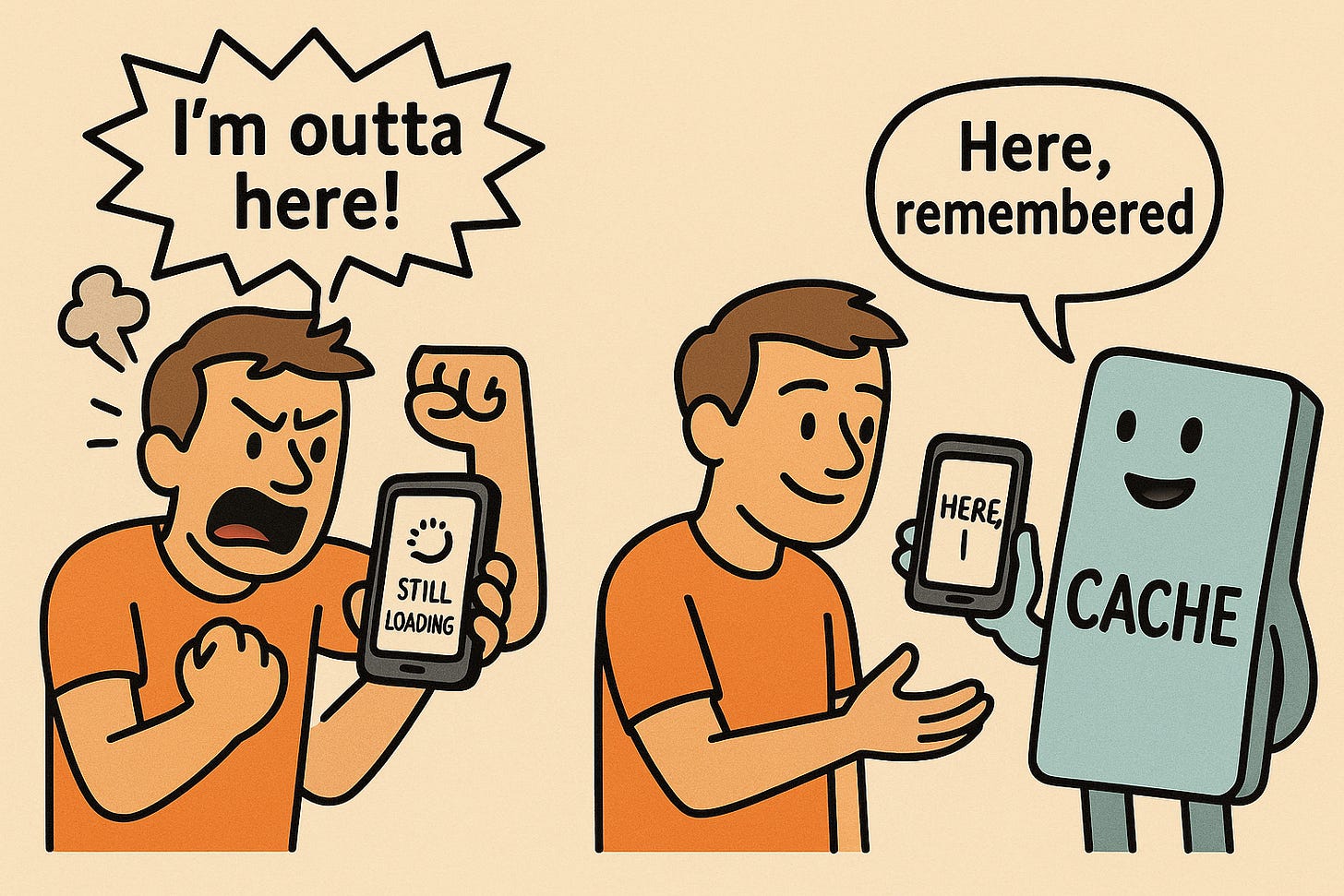😡 “How Caches Save Your App From Rage-Quitting”
(A story about memory, impatience, and making your users feel seen)
Let’s be honest:
We’ve all done it.
You open an app. Tap a button.
Wait.
Wait more.
The little spinner spins like it’s mocking you.
“Still loading… hang tight…”
💥 And boom — you're out. Close tab. Kill app. Rage-quit complete.
But what if I told you that this could have been avoided?
All it needed was a good memory — and that’s what caching is.
🧠 What Is a Cache?
A cache is like short-term memory for your app.
“Hey, I’ve seen this before — let me grab it real quick instead of asking the database again.”
It stores recently used data — stuff like:
Logged-in user info
Product catalog
Home screen content
API responses
So the next time it’s needed… it doesn’t go back to the slow, cold storage room.
It’s right there, already warm.
🕹️ What Happens Without It?
Let’s say you launch an app that shows trending chess puzzles.
Without a cache:
Every user loads the app.
Every user triggers a database query.
Your database cries a little.
Your users cry a little more.
Your app is now a bottleneck simulator.
And your churn rate is climbing.
⚡ With Caching:
Now you preload the puzzles into a fast, in-memory store (like Redis or Memcached).
Result:
User opens app → boom! Puzzles load instantly.
They feel seen.
You feel smart.
Everyone’s happy, including your servers.
🧰 Where Do We Use Caching?
Frontend: Save API responses in memory so you don’t refetch on every scroll.
Backend: Cache DB queries or expensive calculations.
CDN / Edge: Cache images, scripts, and HTML at the edge so they load faster globally.
💬 Analogy Time: Caching as a Coffee Shop
Imagine a customer orders a cappuccino.
You make it fresh. Takes 3 minutes.
Then the next 10 people all order… cappuccinos.
If you cache smartly:
You make one big batch and keep some hot.
Now every new customer gets their drink instantly.
No grumbling. No waiting. No Yelp reviews from angry baristas.
⚠️ But Caches Aren’t Magic
They can go stale.
Your product price changed, but your cache still shows the old one.
You update your homepage, but users keep seeing the cached version.
You forget to invalidate or refresh.
A cache that never forgets… can be just as dangerous.
That’s why we use things like:
TTL (Time to Live)
Eviction policies (least recently used, least frequently used)
Manual invalidation when something critical changes
🧠 Final Thought
A cache isn’t just about speed.
It’s about respect.
It tells your users:
“I remembered what you asked for last time — so you don’t have to wait again.”
And in a world full of lag, being fast feels like magic.
